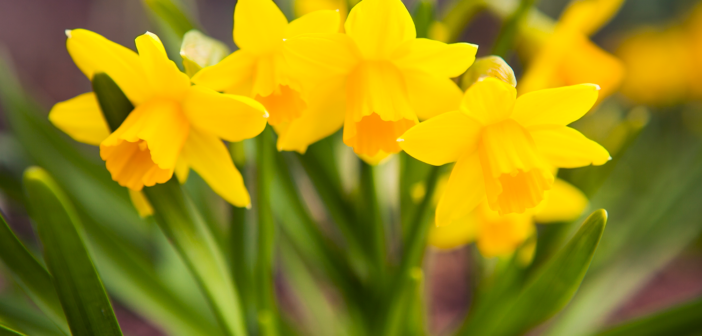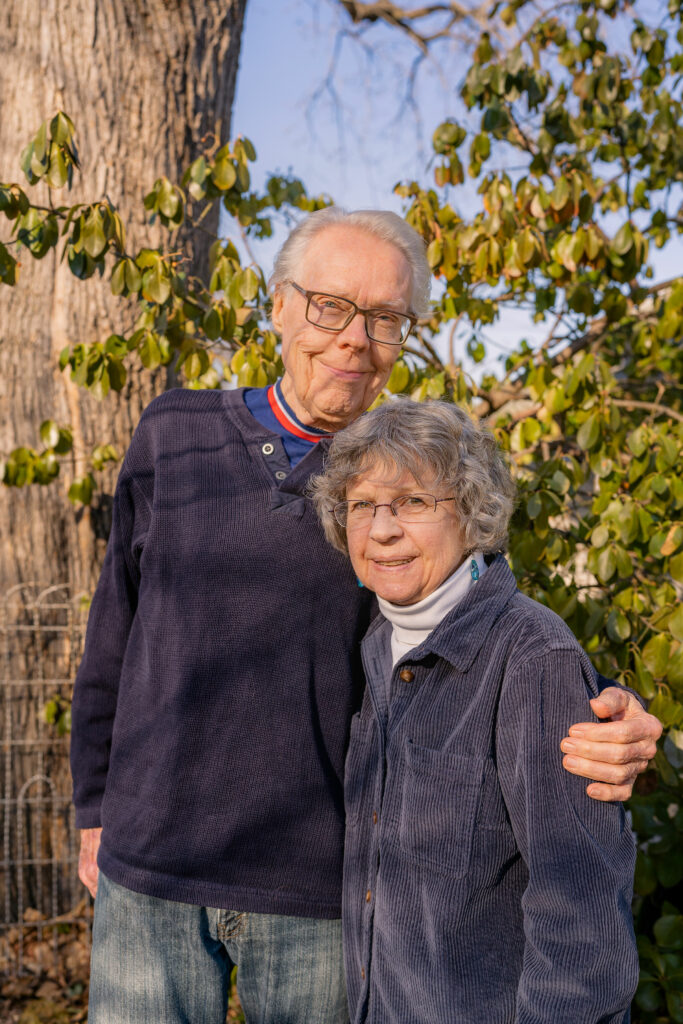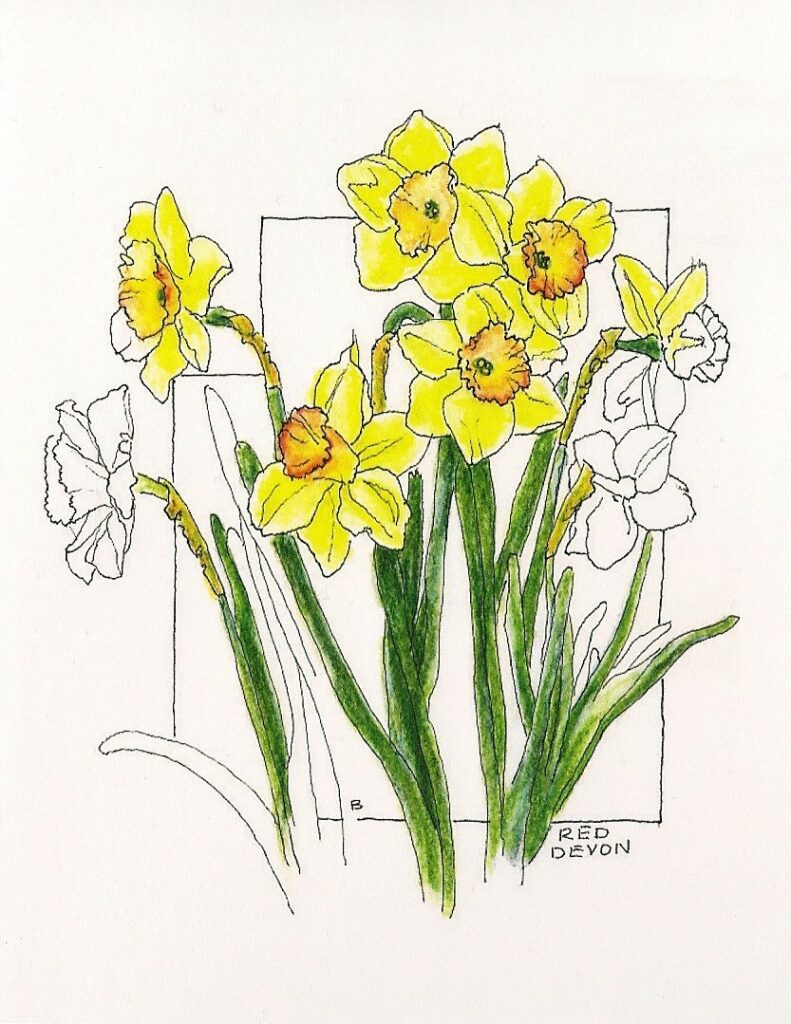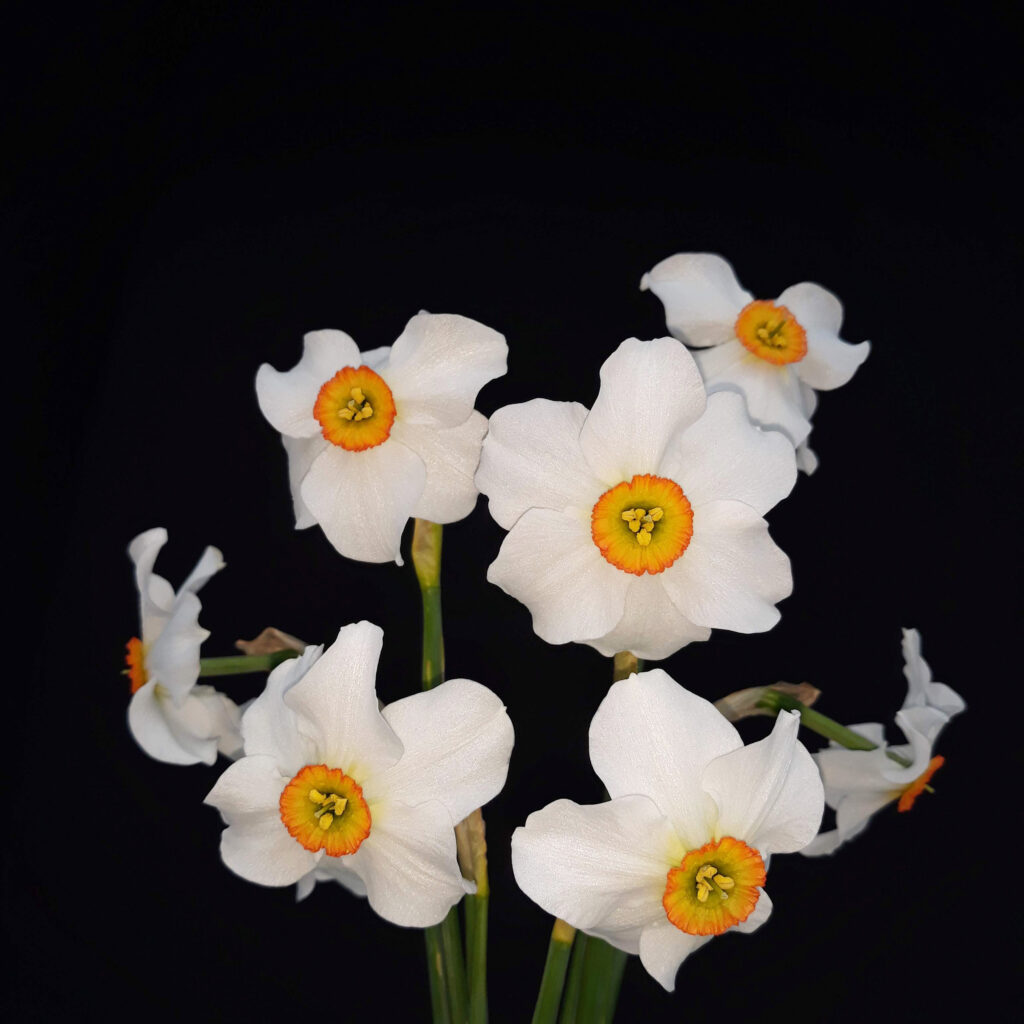Daffodils Parade into Gettysburg
By Karen Hendricks | Portrait photos by Emily Staley
They’re one of the first flowers to announce the arrival of spring. Daffodils, whose centers are often referred to as trumpets, arrive in variations of happy bright yellows and buttery creams like clockwork every year from bulbs underground. Although they’re one of the most recognizable flowers, there’s a lot more to this sweet flower than meets the eye.
Meet a Gettysburg couple who has devoted years to the cultivation and care of this exquisite flower: Becky Brown and Richard Ezell share stories, gardening tips, and even explain how you can attend the American Daffodil Society’s (ADS) National Convention, planting itself in Gettysburg this spring.
Springing into Action
Ezell remembers the exact moment he became “hooked” on daffodils. It was 1962, and he had received a catalog from Park Seeds.
“On the cover was a flower—the most beautiful flower I’d ever seen. It was a Green Island Daffodil, bred in Ireland,” Ezell recalls.
The creamy white, almost translucent, petals feature a frilled cup—or corona—in the center, “with a broad band of brilliant greenish yellow at the rim,” according to the description on DaffSeek, the ADS online reference guide.
“They were expensive, but I got three,” Ezell says, noting the 1962-era price of $7.50 per bulb. Those were the first of thousands of daffodils he would nurture and grow over the next 50-some years.
Today, at the age of 89, he’s been a member of the ADS since 1963—when he attended their first show, held in suburban Philadelphia. He’s been to the annual event—hosted in different cities around the country—every year since, except when attendees participated virtually in 2021. This year, Ezell’s face lights up with a huge smile when he talks about being co-chair of this year’s convention, set for the Wyndham Gettysburg, April 29 through May 1.
What is it about daffodils that captured and captivated him? He thinks for a moment.
“No one has ever asked me that, but I’d have to say it’s a mixture of color and form and grace,” says Ezell. “And the challenges this particular flower presents,” adds Brown. Like many married couples, Brown and Ezell finish each other’s sentences. And, in their case, they also share a common interest in fascinating little flowers called daffodils.
Growing Together
They were librarians—that’s how they met.
Brown worked for the Adams County Library System for 17 years, starting as the bookmobile’s traveling librarian and retiring as the acquisitions librarian.
After serving as an English professor at Temple University, then Wilson College, Ezell went back to school to obtain his degree in library science and became a children’s librarian—“a very odd thing for a man to do at that time,” he notes. “I was told at one time I was the only male children’s librarian in Pennsylvania.”
He went on to become library director for Franklin County for 22 years, and he filled in as Adams County’s director for several years, which is where the couple met.
They’ve been married 22 years and reside in downtown Gettysburg.
Her daffodil gardens are in their backyard; his are at a farm south of Gettysburg. Sometimes, they enter daffodils in direct competition with each other by entering the same categories. She usually wins, he says.
Ezell underwent three years of studies to become an accredited daffodil judge in 1978. He regularly teaches judging schools, sharing his knowledge with others. And there’s a lot to learn—there are a staggering 13 different divisions of flowers, about 40 species, and more than 25,000 registered hybrids, each of them marked by specific classifications and details—when you think about it, not unlike library classifications for books.
Coming into Bloom
How many different varieties has he personally grown over the years? Ezell whistles, then guesses that number to be around 500.
A few favorites include the King Alfred variety, which Ezell describes as a plain yellow daffodil.
“My late friend Bill Bender of Chambersburg was one of the two best American daffodil breeders the U.S. has ever had, and one of the ones he bred is now world famous.
“He named it Tuscarora, named for our local mountain area. It’s all yellow, big and beautiful,” he says.
Another Bender-bred variety and Ezell favorite is Conestoga, featuring off-white petals and an orange center cup.
“Many people would say the best daffodils in the world are bred in the British Isles,” Ezell says. “Holland grows the most—they have good marketing. In this country, the best are grown in the Pacific Northwest, in Oregon and Washington. And the reason all these places grow such good daffodils is because daffodils prefer most of all a cool summer, and a lot of rain any time of the year except summer.”
The flowers, often described as semi-aquatic, are native to the Pyrenees and Alps regions of the Mediterranean. Ezell fondly recalls jonquils, part of the daffodil family, growing on his family’s goat farm throughout his childhood in Arkansas.
While growing daffodils from bulbs is fairly easy, hybridizing seeds is a whole different story.
“It’s a little like onion seeds,” Ezell explains. “Sometimes you have to wait six to eight years for the first bloom—then you can divide the bulbs. You have to be patient to hybridize daffodils. “But,” he says with a laugh, “I still think it’s easier than growing roses or chrysanthemums.”
Daffodil Know-How
Ezell answers the most commonly asked questions about daffodils:
Where should daffodil bulbs be planted?
“They need good light, including some sunshine,” Ezell advises. “They won’t grow in shade. And don’t plant them in a lawn that gets watered by spray in the summer. They do need plenty of water when they’re actively growing, but they prefer being really dry when they’re not in active growth.”
After they’re done blooming, should I cut the leaves?
No, says Ezell. This is a common misnomer. “Don’t braid or cut them off—let the leaves die off naturally,” he says. “Plant a companion plant like daylilies that will be coming up, just as the daffodils are dying down.”
When should daffodil bulbs be dug up and divided?
There is not a hard and fast rule about this, Ezell says. “When they need it—when they don’t look as good as they did the year before, due to either too much shade, or bulbs being crowded and needing to be separated.”
What type of fertilizer do daffodil bulbs need?
“They need a low-nitrogen fertilizer, which rules out all lawn fertilizer,” Ezell says. The first number in a fertilizer’s series of three numbers refers to nitrogen content, so a 5-10-10 fertilizer would be appropriate and could be applied any time of year except summer, when daffodils are “resting.”
Get Your Spring Fix: ADS National Convention
Want to head to the American Daffodil Society’s (ADS) National Convention? It’s free to walk in and see this year’s competition flowers—the varieties in colors, shapes, and sizes, as well as the winners. Typically, between 1,000 and 2,000 different varieties are on display in competition.
“It’s a sea of yellow,” Brown describes. “The daffodil scent is not strong,
but it’s there.”
Usually, the annual convention draws about 250 ADS members from across the country, but amid the pandemic, predictions are for about
150 in Gettysburg.
April 29 – May 1
Wyndham Gettysburg
95 Presidential Circle, Gettysburg
Check the ADS website for the latest information, in case of COVID-19 restrictions or cancellation: www.daffodilusa.org
Daffodil Design
Brown is a lifelong artist whose father was a commercial artist. With pen and ink as her medium of choice, she’s created daffodil illustrations for years, framing them as miniature works of art, plus turning them into notecards. She sells her works every year at the ADS National Convention’s boutique.
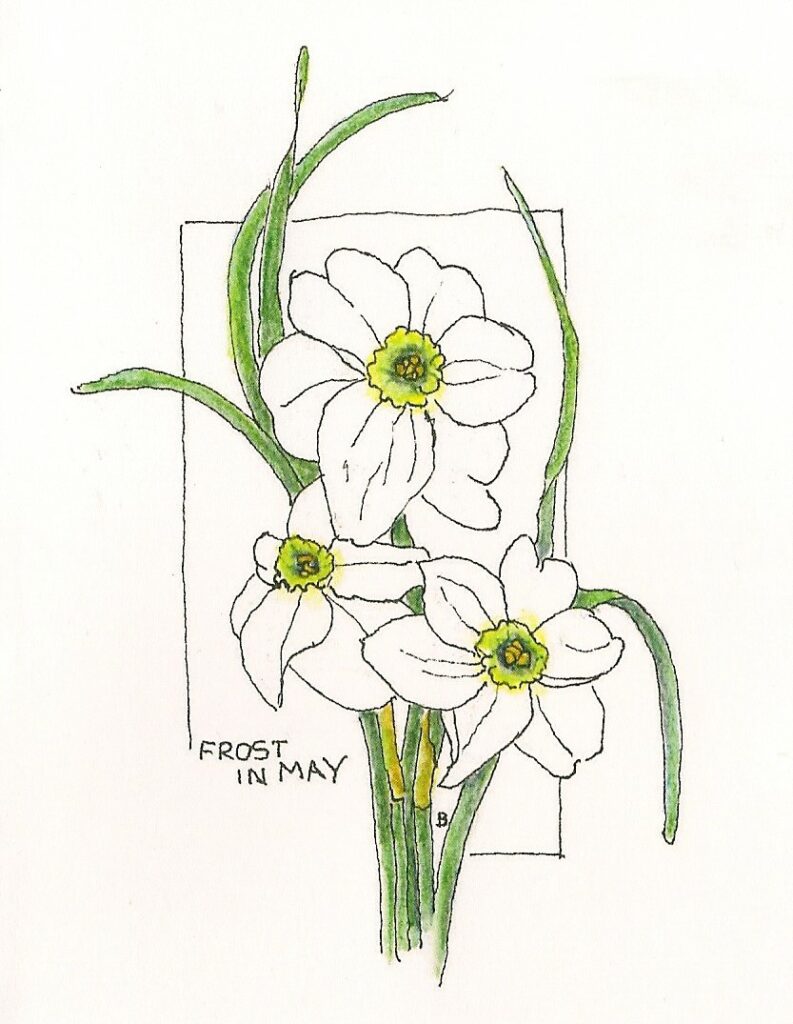
She often draws the cuttings from her own garden, adding color with watercolor pencils.
“I like the way they group together—you get a bouquet together, and they can overlap, and you can see their features sideways. There are a great variety of forms—the cups vary from pink to yellow to white, and there are different sizes of cups too,” Brown says.

